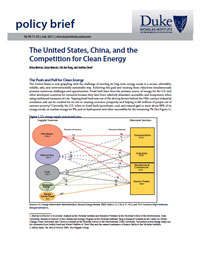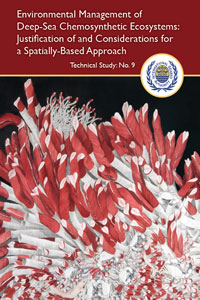Publications
Seeding the Market: Auctioned Put Options for Certified Emission Reductions
There are a number of reasons for considering some kind of market-based, pay-for-performance mechanism to mitigate developing country greenhouse gas (GHG) emissions. This policy brief lays out arguments for the auctioned put option as a pay-for-performance mechanism that would allow governments or philanthropic organizations to support and catalyze markets for GHG reductions. The existing offset market, with its detailed methodologies for calculating emission reductions, offers tools that could be borrowed by such a mechanism. Auctioned put options could target a subset of Clean Development Mechanism (CDM) projects—segregated by type of project or country of origin—or an entirely different set of activities, such as REDD+ (reduced emissions from deforestation and degradation plus conservation, sustainable forest management, and enhancement of carbon stocks). The key element is that there must be standardized rules (or the promise of rules) detailing how emission reductions get counted and certified.
Freshwater Ecosystem Vulnerability Assessment: The Indrawati Sub-Basin, Nepal
This report is part of a project of WWF Nepal and the Nepalese Water and Energy Commission Secretariat (WECS). It outlines the discussions and conclusions of three workshops held in Nepal to determine the vulnerability of the Indrawati sub-basin to the impacts of climate change and development within the context of climate change vulnerability at the national level. Held over the course of four days in Kathmandu and in the Sindhupalchok district headquarters of Chautara, the workshops brought together a diverse group of more than 60 participants, including Nepali national experts, local bureaucrats, and most importantly, local water users and subsistence farmers with direct knowledge of resource management issues in the basin.
Show Me the Money: Energy Efficiency Financing Barriers and Opportunities
A new paper by Duke University’s Nicholas Institute for Environmental Policy Solutions and the Environmental Defense Fund explores how organizations can overcome the challenges to energy efficiency financing. This paper briefly characterizes energy efficiency market sectors; describes the major players in the energy efficiency financing market; describes the key barriers facing each market sector; reviews primary internal and external financing strategies used by each market sector; summarizes our investor discussions; and offers conclusions and recommendations for catalyzing large-scale deployment of capital to the energy efficiency sector.
C-AGG, T-AGG, and M-AGG: A model for building collaborative actions and common understanding on agricultural GHG mitigation
A new Climate Change Agriculture and Food Security working paper, led by the Nicholas Institute for Environmental Policy Solutions’ Lydia Olander, provides an overview of three interrelated initiatives for greenhouse gas mitigation: the Coalition on Agricultural Greenhouse Gases (C-AGG), the Technical Working Group on Agricultural Greenhouse Gases (T-AGG) and the Market Mechanisms for Agricultural Greenhouse Gases (M-AGG). Working together, all three have aided in engaging U.S. scientists, farmers and policy makers in sharing information and better communicating to advance agricultural greenhouse gas mitigation opportunities and efforts. Similar networking approaches may be effective for accelerating progress in developing countries.
The United States, China, and the Competition for Clean Energy
The United States is now grappling with the challenge of meeting its long-term energy needs in a secure, affordable, reliable, safe, and environmentally sustainable way. In United Nations Framework Convention on Climate Change negotiations in December 2010, the United States and other countries committed to reduce greenhouse gases (GHGs) by 2020 and fund mitigation and adaptation activities in developing countries. China, now the world’s largest emitter, has agreed to cut its GHG emissions significantly, reflecting its recent commitment to scientifically balanced development and the development and deployment of renewable and other clean energy sources. Since mid-decade, China has gone from being a relatively small player in clean energy to the world’s largest investor. This policy brief poses a number of questions aimed at identifying how best the U.S. should advance its interests with regard to the development and deployment of clean energy technologies, both in absolute terms and relative to China and other major economies.
Managing Dependencies in Forest Offset Projects: Toward a More Complete Evaluation of Reversal Risk
Although forest carbon offsets can play an important role in the implementation of comprehensive climate policy, they also face an inherent risk of reversal. If such risks are positively correlated across projects, it can affect the integrity of larger project portfolios and potentially the entire offsets program. Here, we discuss three types of risks that could affect forest offsets—fat tails, micro-correlation, and tail dependence—and provide examples of how they could present themselves in a forest offset context. Given these potential dependencies, we suggest several new risk management approaches that take into account dependencies in reversal risk across projects and which could help guard the climate integrity of an offsets program. We also argue that data collection be included as an integral part of any offsets program so that disturbance-related dependencies may be identified and managed as early and to the greatest extent possible.
Environmental Management of Deep-Sea Chemosynthetic Ecosystems: Justification of and Considerations for a Spatially-Based Approach
This report is the result of a June 2010 workshop sponsored by the International Seabed Authority in Dinard, France. Linwood Pendleton, director of ocean and coastal policy at the Nicholas Institute, along with deep sea biologists and policy makers attended and contributed to this report. It presents the first design principles for the comprehensive management of chemosynthetic environments in the global ocean and serves to introduce chemosynthetic ecosystems into the discourse of systematic marine spatial planning.
Transportation and Climate Policy Summary: Greenhouse Gas Emissions Resulting from Different Infrastructure Spending Levels
One key element of federal surface transportation legislation is the overall spending level, which determines the level of investment in transportation-related infrastructure. Yet the effect of spending on transportation-related greenhouse gas (GHG) emissions is not well understood. This policy brief presents analysis of spending scenarios matched approximately to current reauthorization proposals. Transportation infrastructure spending levels do not significantly alter transportation GHG emissions, meaning that infrastructure spending policy by itself is an ineffective tool for reducing GHG emissions, and that setting the overall spending level to meet policy goals unrelated to climate will not wipe out climate-related outcomes. Other transportation-sector policy tools have greater potential for achieving significant GHG emissions reductions.
A Review of U.S. Efforts in Water and Sanitation
Access to safe water and sanitation has expanded significantly around the world in recent years, in part because of efforts by the United States, which has been increasingly active in the water, sanitation, and hygiene (WASH) sector through engagement by the government, foundations, NGOs, faith-based organizations, academia and the private sector. The Nicholas Institute for Environmental Policy Solutions at Duke University has assessed the momentum, funding and effectiveness of this engagement since 2005, when the Nicholas Institute and the Aspen Institute held a forum on WASH challenges. This report references recommendations from that forum and presents the results of recent structured interviews with over 45 stakeholders active in the WASH sector. These stakeholders provided invaluable insights on what has been achieved, what has changed, and what requires attention. Particular consideration was given to the efforts of the U.S. government (USG).
East Coast Forum Summary: Catch Accounting and Monitoring
Summary of discussion themes and guide to additional resources from the 2011 East Coast Fisheries Forum.










